Take Charge of Your Health: Unveiling the Hidden Power of Whole Grains
Jul-03, 2023
|
"The black millet, the double kernelled, millet pink-sprouted and white."
These enchanting words from an ancient Chinese folk song beautifully depict millets as precious grains, bestowed upon us as a stroke of luck. Millet, a nutritional treasure trove, traces its roots back to the Stone Age, with various types even discovered in archaeological sites such as Mohen-jo-daro and Harappa. Interestingly, it was millets and not rice that formed the dietary staple for civilizations in India, China, and Korea during the Neolithic period.
With around 6,000 varieties spread across the globe, millets thrive in arid and semi-arid regions, providing a vital source of energy and protein for over a billion people. Unlike our heavily cultivated wheat, rice, and corn, millets are resilient crops that require minimal attention to flourish.
Jolada roti, ragi mudde, bajra khichidi, nachni dosa, thinai pongal – do these names ring a bell? These are traditional foods that we may have heard of and grown up with. Yet, millets, like many other heritage foods, have sadly been overlooked. It's a pity because they are not only highly nutritious but also non-glutinous and non-acidic, making them gentle on the digestive system. In fact, millets are often consumed during periods of fasting in India, showcasing their significance. Moreover, their incredible versatility allows for a vast array of delightful culinary creations. So, let's explore the emotional health benefits of millets and discover how to incorporate them into our daily cooking.
Did you know
The staple food of ancient India was millet, not rice.
High in fiber, rich in essential amino acids, vitamins and minerals, naturally gluten-free, alkaline, non-allergenic, they are thus easily digestible.
A low glycemic index makes them an ideal rice substitute, good for cholesterol, diabetes and weight loss.
Millets: Your Path to Health and Harmony
In our quest for a healthier lifestyle, millets emerge as powerful allies, especially for those battling diabetes, obesity, and other lifestyle diseases. These ancient grains offer a glimmer of hope, laden with emotional health benefits that can transform our well-being. Let's delve into the captivating world of millets and explore how they can revolutionize our lives.
A Wholesome Solution for Better Health
1. Balancing Blood Glucose Levels
With their low glycemic index, millets prove to be a smart choice for individuals concerned about their blood glucose levels. Unlike refined carbohydrates, which rapidly spike blood sugar levels, millets provide a sustained release of energy, preventing sudden fluctuations and promoting better insulin response. By incorporating millets into your diet, you can regain control over your blood sugar and embark on a path to healthier living.
2. The Wisdom of Traditional Medicine
Traditional medicine has long revered millets for their ability to support digestion, stimulate appetite, nourish the body, enhance lactation, and bring harmony to the stomach. These age-old beliefs are rooted in the profound wisdom of our ancestors, reminding us of the holistic benefits millets offer beyond their nutritional value. Embracing millets allows us to tap into ancient traditions and find solace in their therapeutic properties.
3. Empowering Digestive Health
In a world where digestive disorders plague many, millets provide a gentle yet effective solution. Their high dietary fiber content promotes a healthy intestinal tract, aids in toxin elimination, and supports regular bowel movements. By incorporating millets into your meals, you can embrace a happier, healthier digestive system, and bid farewell to discomfort and irregularity.
A Nutritional Powerhouse in Every Bite
Beyond their remarkable health benefits, millets shine as a nutritional powerhouse, packed with essential vitamins and minerals that our bodies crave. Let's uncover the abundant nutrients that millets offer:
Phosphorus: Vital for energy production and storage, phosphorus fuels our bodies and keeps us going. Magnesium: Enhancing nutrient delivery and increasing insulin sensitivity, magnesium plays a pivotal role in maintaining our overall well-being. Protein: While the nutrient composition varies among millet varieties, most are rich in protein, supporting muscle development and repair. Calcium, Iron, and Zinc: These minerals are essential for various bodily functions, ensuring the strength of our bones, oxygenation of our cells, and a robust immune system.
Vitamin B6, Niacin, and Folic Acid: Millets provide a generous supply of these essential vitamins, contributing to energy production, nervous system health, and overall vitality. Lignans: Known for their potential protective effects against breast cancer and cardiovascular diseases, lignans present in millets offer an added layer of defense for our well-being. Embrace the Millet Revolution Today Incorporating millets into your daily cooking is simpler than you might imagine. Start by experimenting with flavorful recipes such as millet porridges, khichidis, and dosas. Let the aroma of these delightful creations fill your kitchen, and allow the emotional health benefits of millets to permeate your being. Rediscover the harmony between nourishment and taste, and pave your way to a healthier, more vibrant life.
TYPES OF MILLETS
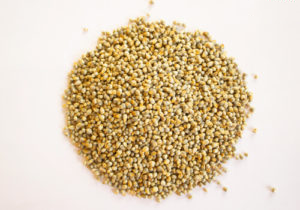
PEARL MILLET OR BAJRA
Grown and consumed extensively in the African and Indian subcontinent from ancient times, pearl millet is rich in phosphorus which helps cells store energy, and many other vital minerals. Often cooked in winter, pearl brings warmth to the body and increases energy levels.
Traditional pearl millet recipes: include kamban koozh, an old-time porridge from Tamil Nadu and bhakri roti, eaten across India, from Maharashtra to Gujarat and Karnataka.
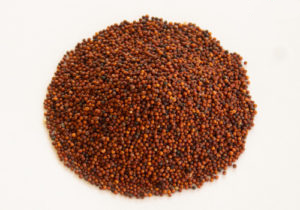
FINGER MILLET OR RAGI
Has the highest calcium content of any millet and grows easily in arid areas. Often referred to as an anti-diabetic grain, its high fiber content also checks constipation, cholesterol and intestinal cancer.
Traditional finger millet recipes: Ragi balls or ragi mudde as they’re locally known, are a staple in Karnataka. Ragi malt, or porridge being highly nutritious and easy-to-digest is a common weaning food.
Note: Both bajra and ragi contain goitrogens that could aggravate the thyroid gland, if taken too many times in a day.
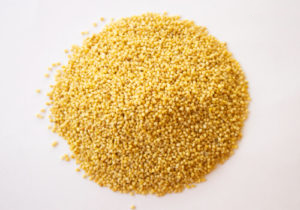
FOXTAIL MILLET OR NAVANE
Possibly the oldest cultivated millet, it is thought to have originated in Northern China, where it is highly regarded as a healing food for postpartum and digestive health. Foxtail millet has a rich mineral content, and is specially high in iron. A popular fasting food in some parts of India, it is interestingly called xiaomi, or little rice in Chinese.
Traditional foxtail millet recipes: Idli, upma, payasam, biryani. Commonly made into porridge in the northern parts of China.
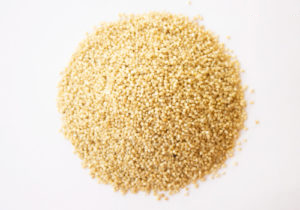
LITTLE MILLET, SAMAI OR KUTKI
The smallest of the millet family, little millet is yet another reliable catch crop grown across India. It is very easy to cook and is often simply used as rice and in fact, can be used in any recipe that demands rice. Higher iron content gives it an edge over rice specially for those with anemia.
Traditional little millet recipes: Substitute rice in pulau, payasam, khichadi, biryani, in fact any rice recipe with little millet.
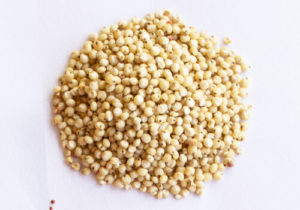
SORGHUM OR JOWAR/JOLA
Sorghum is widely cultivated and consumed across many states in India and rotis made with johar are much easier to digest. It is rich in potassium, phosphorus, calcium, iron and zinc.
Traditional jowar recipes: Used extensively across India to make rotis and porridge.
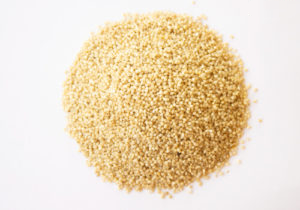
BARNYARD MILLET
Barnyard millet grows faster than you can say samvat ke chawal. One of the highest fibre and iron content amongst fellow millets, it has a low carb content is a good source of B-complex vitamins.
Traditional barnyard millet recipes: Used to make different types of porridges. Slightly sticky when cooked, samvat ke chawal is popular during navratras, when they are used to make upma, khichdi and pulav during fasts.
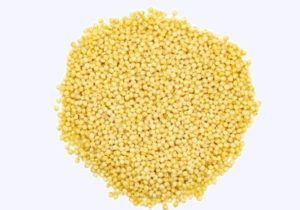
PROSO MILLET OR BARAGU/VARAGU
Though its protein content is similar to that of wheat, it is considered a far higher quality protein source because it is not only rich in essential amino acids (leucine, isoleucine and methionine), it is also gluten-free. About as old as foxtail, proso is one of the more delicious and temperate millet varieties.
Traditional proso millet recipes: Upma, pulau/biriyani and porridge.
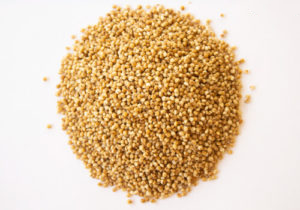
KODO MILLET OR ARAKA
As with other varieties, kodo was domesticated several thousands of years ago. It has a high amount of lecithin and is excellent for strengthening the nervous system. It is also rich in B vitamins, especially niacin, B6 and folic acid, as well as the minerals such as calcium, iron, potassium, magnesium and zinc.
Traditional kodo millet recipes: Upma, idli, pulau/biriyani and porridge.
Revitalize Your Daily Diet
Have you ever wondered how to incorporate millets into your daily meals without sacrificing the flavors you love? The good news is that by simply swapping one or two ingredients with millets, you can indulge in a delicious and well-balanced diet that nourishes your body. Let's explore some creative ways to integrate millets into your culinary adventures:
1. Rice Replacement Magic
Why not start by replacing rice with millets? A simple half-and-half mix of millets and rice can make a world of difference. Try it for one meal and savor the delightful transformation. You'll be amazed at how millets add a unique touch to your dining experience.
2. Dosa Delight
If you make dosa batter at home, why not give millets a chance instead of rice? Explore the realm of flavors by using millets in your dosa batter or experimenting with a half-and-half mix. Let your taste buds embark on a delightful journey while reaping the nutritional benefits.
3. Healthier Pulao Pleasures
Elevate your pulao game by substituting rice with millets. Load your dish with an abundance of colorful veggies and let the millets work their magic. Not only will you enjoy a scrumptious meal, but you'll also nourish your body with the goodness of millets.
4. Sweet Temptations
Indulge in the realm of sweetness with millets. Prepare a delectable millet payasam using palm sugar or jaggery. Let the rich flavors envelop your senses and relish a dessert that not only satisfies your cravings but also provides nourishment.
5. Breakfast Bliss
Start your day on a nutritious note by swapping oats with millets. Cook millets to perfection and embellish them with raisins, brown sugar, or nuts. Revel in the warmth and wholesomeness of a millet-based breakfast that energizes you for the day ahead.
6. Burger Bonanza
Unleash your creativity by crafting vegetarian "burgers" using millets. Combine cooked beans or peas with millets, season them to perfection, shape them into patties, and either bake or pan-fry. Indulge in a guilt-free burger experience that satisfies your taste buds and supports a healthy lifestyle.
7. Hearty Soups and Stews
Enhance the nutritional value of your soups and stews by incorporating millets. Simply rinse millets and add a handful to your crockpot. Allow them to absorb the flavors as they cook and become tender. Alternatively, cook millets separately and add them to your favorite soup or stew for a wholesome twist.
A Sustainable Choice
Embracing millets not only benefits your health but also supports sustainable agriculture. By consuming millets, we encourage farmers in arid and semi-arid regions to cultivate crops that thrive in their respective environments. Many farmers practice "akkadi," a mixed cropping system that boosts on-farm biodiversity and sustainability. This method enhances soil fertility, strengthens plants, and empowers them to combat pests and diseases naturally.
Let us join hands in nurturing our bodies and the environment by embracing the millet revolution. With each millet-infused dish, we celebrate the wonders of nature and pave the way for a healthier, more sustainable future.
- Famous Games
- Live Dealer Games
- Matka Online
- Online Cricket Betting
- Baccarat Online India
- Delhi Horse Race Live
- Teen Patti Real Money
- Lottery Online Games
- Live Andar Bahar
- Online Slot Machine
- Famous Online Casinos
- Best Betting Apps in India
- News
- Online Roulette Games
- Rummy Games
- Online Fishing Games
- Online Card Games
- Free Live Stream Platforms
- Online Sports in India